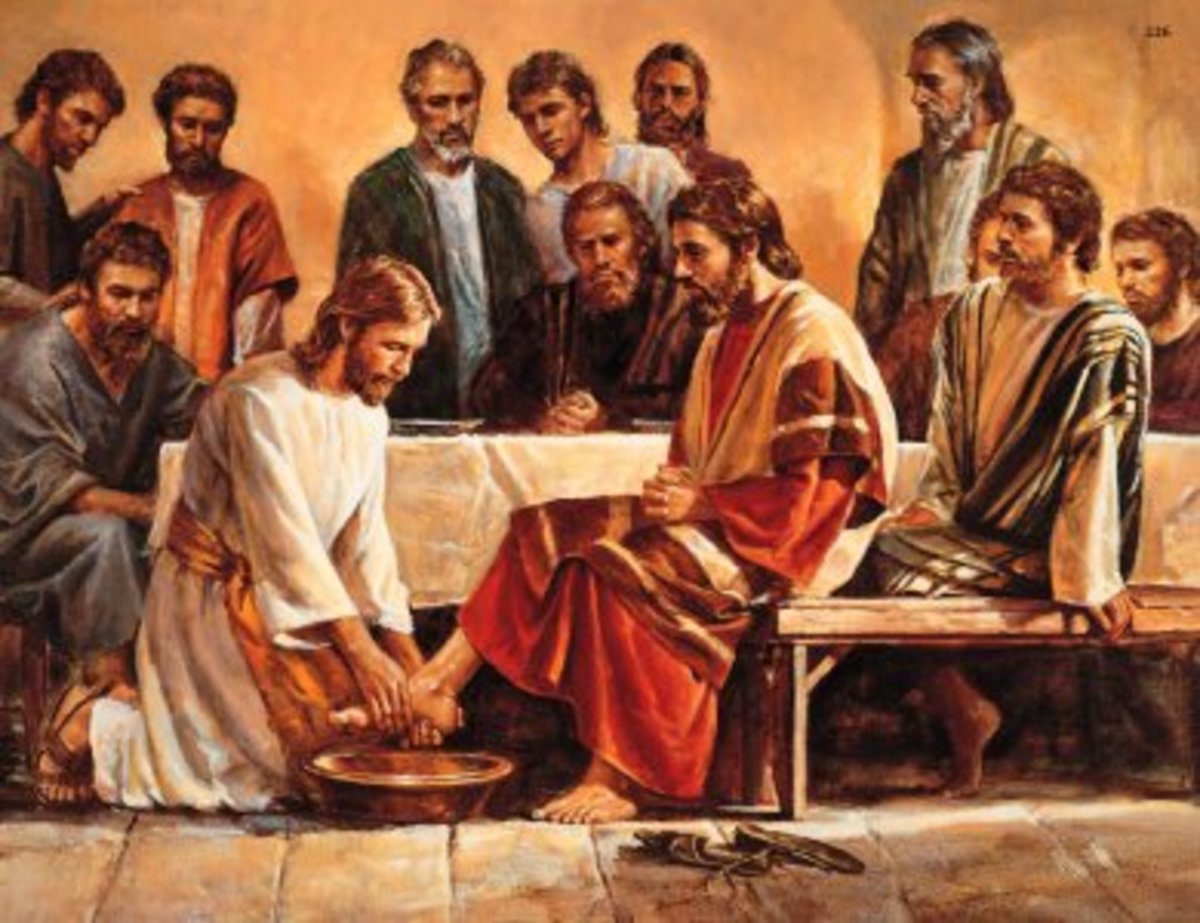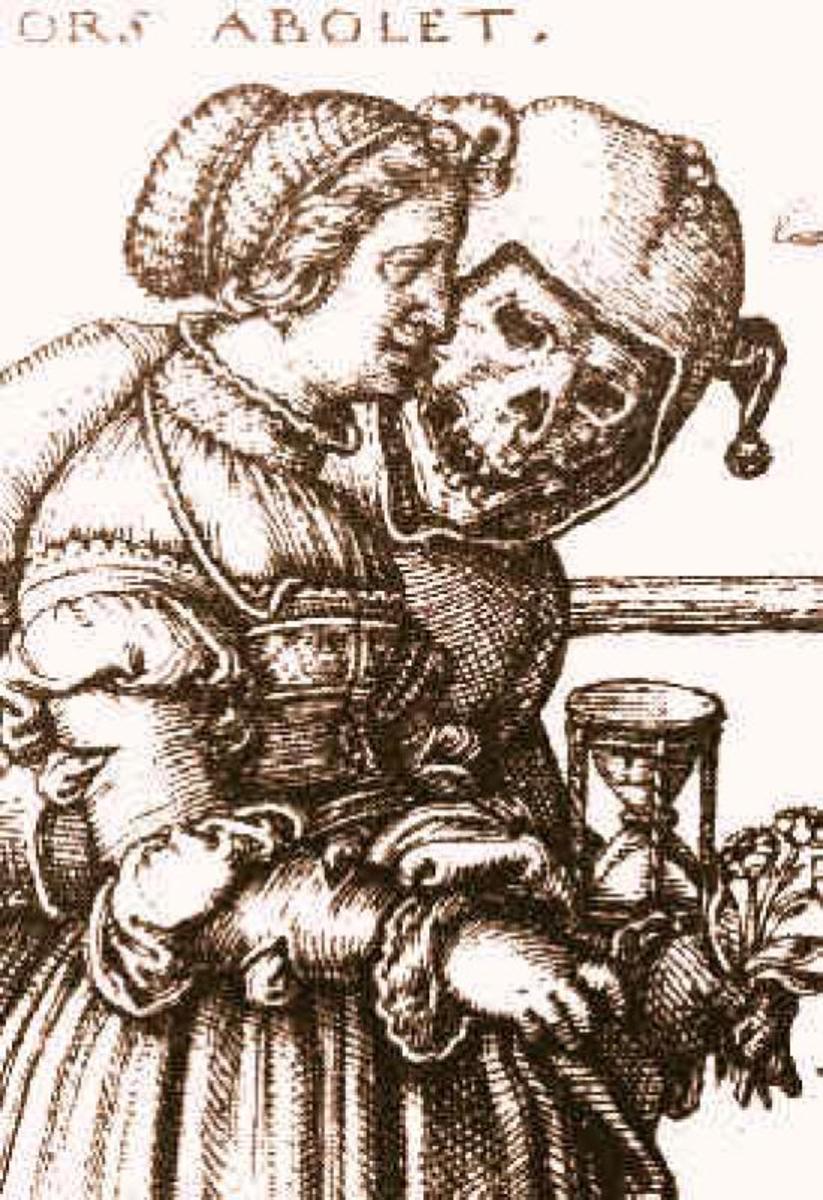Bible: What Does John 18 Teach Us About Jesus' Trials and Peter's Denials?
The Garden of Gethsemane
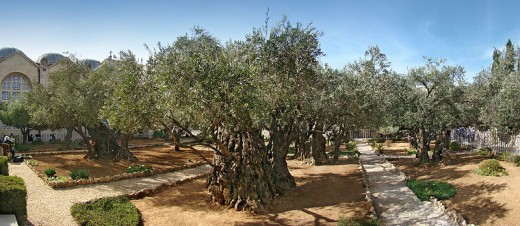
The Apostle John

In the Garden of Gethsemane
Christ and the Eleven go out—they had already left the upper room (14:31), so their place of departure is unknown—, cross the Brook Kidron—Charles Ryrie refers to it as a “ravine E. of Jerusalem, between the city and the Mount of Olives” (New Testament Study Bible, 197)—, and enter the Garden of Gethsemane—a place where they had often met.
Judas, also knowing the site, leads a large contingent of armed soldiers there to find Jesus and arrest Him (vv. 1-3).
[Ryrie points out that a Roman cohort contains between three hundred and six hundred soldiers (197).]
As he has done before in this gospel, the Apostle John notes another instance of Jesus’ omniscience coming into play.
Here knowing what “would come upon Him,” Christ walks toward the mob and asks the Roman leader, “Whom do you seek?” (v. 4; cf. 6:64; 13:1, 3; 19:28).
[With this gesture, the Lord also shows His great courage and even His courtesy.]
When Jesus identifies Himself as the One they seek (“I am He”), the soldiers say nothing but “drew back and fell to the ground” (vv. 5-6).
[John’s language here implies that the Lord’s commanding presence and His use of an “I AM” saying overwhelmed them.
Perhaps their reaction signified an acknowledgement of His deity.
Regardless of the real reason for their behavior, Christ showed that He controlled the proceedings, not the soldiers.]
“Take Two” on the Q & A eventually leads to a two-part negotiation:
(1) Jesus permits them to arrest Him; and
(2) He reasons with them to let the apostles escape (vv. 7-8).
John inserts that Jesus arranged the apostles’ deliverance from death in order to fulfill His earlier word (v. 9; cf. 6:39; 17:12).
The Apostle Peter

Peter's Bravado
Not content with the current circumstances, Simon Peter takes action, slicing off Malchus’ ear (v. 10; cf. Lk. 22:49-51).
Jesus rebukes Peter, commanding him to sheathe his sword, and then He questions His apostle’s attempt to keep Him from fulfilling the Father’s mission (v. 11).
[Christ apparently meant for the Eleven to purchase swords so that Scripture might be fulfilled, but not that they might actually defend themselves on this occasion (see Luke 22:36-38).]
Annas, High Priest
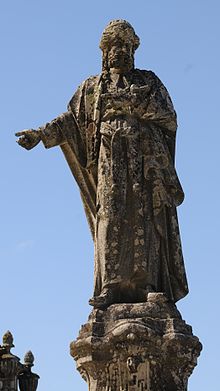
Trial Before Annas
John names the three separate entities—the cohort, the captain (unnamed earlier), and the servants of the high priests—that arrest Jesus, bind Him, and lead Him to Annas, the father-in-law of the high priest Caiaphas (vv. 13-14; cf. 18:3), and then reminds his readers of Caiaphas’ prophetic claim to infamy (v. 15; cf. 11:49-52).
Peter and “another disciple”(John) follow the arresting party; however, only John, an acquaintance of Annas, is able to accompany Jesus into the high priest’s courtyard (v. 15).
[How did John come to know Annas?
Did Annas know John to be a disciple of Jesus?]
Peter stays outside until John used his influence with a female doorkeeper to permit the other apostle’s entrance (v. 16).
Knowing John to be a disciple of Jesus, she questions Peter about whether he is a disciple of Jesus also; Peter, of course, denies it (v. 17).
[First, John appears to tweak Peter’s nose because the former has political connections and the latter does not, and now he apparently points out Peter’s cowardice as opposed to his own courage.]
Peter joins others by a fire of coals to warm himself on that cold night (v. 18).
In the meantime, Annas questions Jesus inside his quarters, apparently curious about His doctrine and about His disciples (v. 19).
When the Lord asks the Pharisee why he interrogates Him (Whose public ministry and views are well known) and not His disciples (from whom he could acquire the information he seeks), He receives both a slap and a rebuke from an officer standing by (vv. 20-22).
[Why did Christ not find it appropriate to defend His ministry before Annas?]
The Lord defends His innocence before the officer on this occasion, and accuses him of wrongdoing for striking Him (v. 23).
Annas realizes that the proceedings were going nowhere, so he sends Jesus to Caiaphas (v. 24).
The scene now shifts back to Peter’s dilemma: acknowledge his relationship to Christ, or deny it; frightened, he denies that he knows Him (vv. 25-27).
A comparison of the accounts of Peter’s denials is enlightening; Luke’s account appears in a second chart.
Peter's Denials
Matthew
| Mark (Compare with Matthew)
| John
|
|---|---|---|
Peter encounters people who recognize him as an associate of Jesus. He claims ignorance of the assertion of a servant girl in the courtyard (vv. 69-70), denies with an oath the claim of another girl at the gateway (vv. 71-72), and curses and swears against the accusations of other bystanders (vv. 73-74a).
| Matthew and Mark present their record of Peter’s triple denial of Jesus with some substantial differences. First, Mark adds that Peter was “below” in the courtyard “warming himself” when the servant girl of the high priest identified him (vv. 66-67); Matthew, not having Peter as an eyewitness, is far less explicit. Second, a first rooster crow follows Peter’s first denial which, incidentally, treats the denial more fully than does Matthew’s record (v. 68; cf. 26:70).
| Then the servant girl who kept the door said to Peter, “You are not also one of this Man’s disciples, are you?” He said, “I am not.”
|
Third, Mark seems to indicate that the same servant girl saw the apostle a second time (v. 69), but Matthew reports that he caught another girl’s attention by the gateway (26:71). In addition, the servant girl’s words vary from Mark to Matthew—“This is one of them” (v. 69) to “This fellow also was with Jesus of Nazareth”—the same expression the first girl used (26:71; cf. 26:69). Fourth, interestingly, while Mark again paraphrases (“But he denied it again”), Matthew pens that Peter replied with an oath, “I do not know the Man!” (26:72).
| Now Simon Peter stood and warmed himself. Therefore they said to him, “You are not also one of His disciples, are you?” He denied it and said, “I am not!” One of the servants of the high priest, a relative of him whose ear Peter cut off, said, “Did I not see you in the garden with Him?”
| |
Fifth, the bystanders now gather around the apostle and finger him as “one of them,” i.e., a Galilean, recognizing Peter’s accent (v. 70); Matthew merely mentions Peter’s speech, but not its peculiar origin (26:73).
| ||
Sixth, Mark’s second rooster now crows; Matthew takes note of only one (v. 72; cf. 26:74-75). Finally, Mark records that Peter thought about Jesus’ prophecy before breaking down in tears (v. 72); Matthew says nothing about Peter’s mental processes, but does recount that he wept bitterly (26:75).
|
Harmony of the Gospels
Is it possible to harmonize the Gospels?
At this time, Luke focuses on the episode delineating Peter’s three denials (vv. 54b-62).
[The other Synoptics insert the event of the first kangaroo court (see Mt. 26:59-68; Mk. 14:55-65) before returning to recount Peter’s plight.]
The details of the three denials—that is: those who confronted Peter; their words; Peter’s words; and the time element—mesh well among the three gospels; the only real divergence occurs when Mark reports that two roosters crow during this period (14:68, 72).
Again, one evangelist may include additional words in his account that another one omits, but that difference amounts to style and choice, not a discrepancy.
Compare the accounts below:
Luke
| Mark
| Matthew
|
|---|---|---|
A servant girl—This man was also with Him.
| A servant girl—You also were with Jesus of Nazareth.
| A servant girl—You also were with Jesus of Galilee.
|
Peter—Woman, I do not know Him.
| Peter—I neither know nor understand what you are saying.
| Peter—I do not know what you are saying.
|
Another—You also are of them.
| The same servant girl—This is one of them.
| Another girl—This fellow also was with Jesus of Nazareth.
|
Peter—Man, I am not.
| Peter denied it again (no actual words recorded).
| Peter—I do not know the Man!
|
An hour later, another—Surely this fellow also was with Him, for he is a Galilean.
| A little later, those who stood by—Surely you are one of them: for you are a Galilean, and your speech shows it.
| A little later, those who stood by—Surely you also are one of them, for your speech betrays you.
|
Peter—Man, I do not know what you are saying!
| Peter—I do not know this Man of whom you speak!
| Peter—I do not know the Man!
|
Jesus' Trial Before Pilate
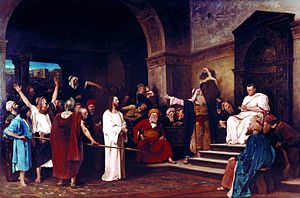
Trial Before Pontius Pilate, Roman Goverrnor
John includes two details regarding Peter’s third denial that none of the other gospels brings out.
First, one of the bystanders happens to be related to Malchus, the apostle’s victim in the Garden (v. 26).
Second, John records nothing about this individual recognizing Peter’s Galilean speech.
Early that morning, the Jews take Jesus from the Caiaphas interrogation—an event that John does not record—to the Praetorium, Governor Pilate’s headquarters.
To avoid being defiled by entering a Gentile dwelling place (that would preclude their observance of Passover), they remain in the outer court, obliging Pilate to go out to them to inquire about their charges against Jesus (vv. 28-29).
When the governor does not receive a satisfactory answer from them—Pilate concerns himself only with crimes against the Roman state, and the Jews do not specify what Christ’s crime is (v. 30)—he is ready to dismiss the hearing until they tell him that they do not have the authority to execute people (v. 31).
The Apostle John inserts here that the Jews’ indictment fulfilled Jesus’ prophecy foretelling His death by crucifixion (v. 32).
While Jesus stands before Pilate, he asks Him, “Are You the King of the Jews?” (v. 33).
In response, the Lord questions him, seeking to discover who prompted the governor to ask Him this particular question: himself (a Roman) or someone else (the Jewish leadership) [v. 34].
When Pilate replies rather petulantly that the query arose from the Jews’ accusation and not from any religious interest that he might have in Him (v. 35), Jesus assures the governor that His kingdom is not only not a rival to Rome’s, but it is also not even “of this world,” i.e., not of human origin (v. 36; Ryrie 199; cf. 17:14).
Jesus: Truth Incarnate
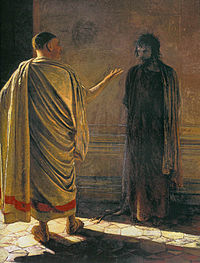
Pilate: "What is Truth?"
Hearing Jesus' claim to be a king prompts Pilate to continue the examination (v. 37a).
Christ first acknowledges the correctness of the governor’s conclusion—that is, that He is a king—, and then informs him that He came into this world only to bear witness to the truth (that is, of His kingship and of other concerns) [v. 37b].
He who belongs to God (“Everyone who is of the truth”), Jesus says, understands and obeys His voice (v. 37c).
Pilate’s incredulous question “What is truth?” does not seek an answer from Christ (v. 38a); Ryrie believes that it expresses the governor’s frustration “at Jesus’ avoidance of a direct answer” (199).
After announcing to the Jews that he had found no fault in Jesus, Pilate seeks to release Him as the current year’s token prisoner; this action seemed to serve as Rome's way to relieve political pressure (v. 39).
The Jews, however, demand that he free the robber Barabbas instead of Jesus (v. 40).
© 2014 glynch1

